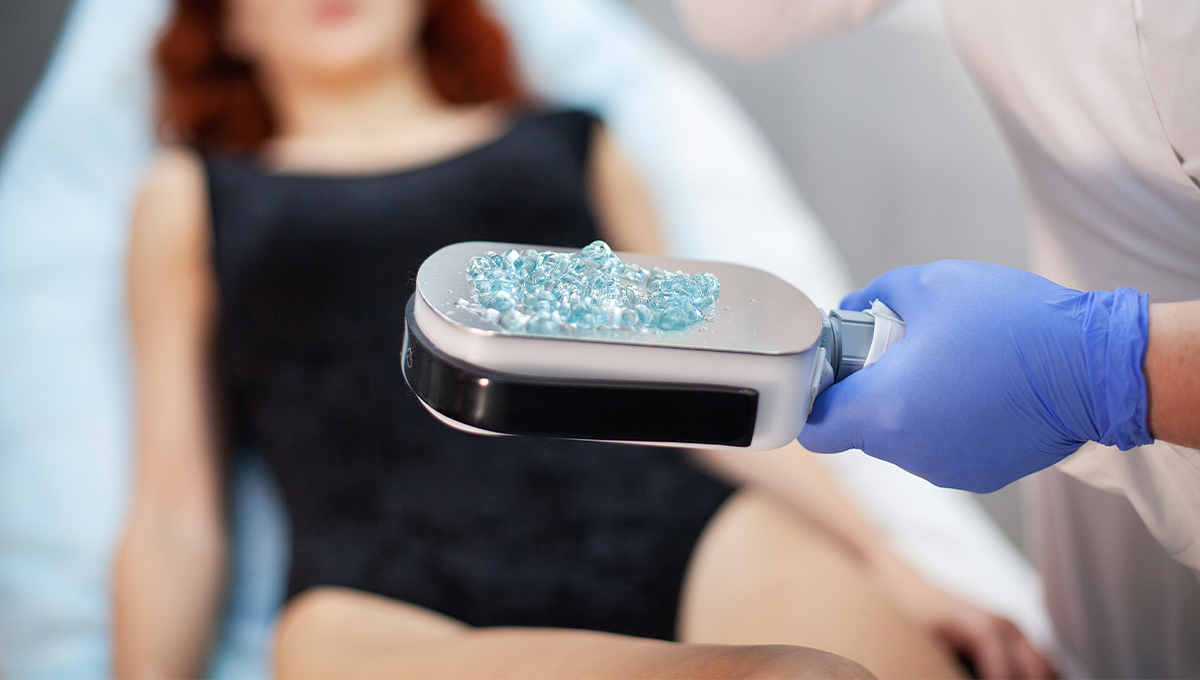 Skin tags may show up overnight. While harmless, they can be a real nuisance, both aesthetically and sometimes functionally. Thankfully, there are options beyond wielding the scissors (which we strongly advise against!). Skin tag removal cryotherapy is emerging as a popular choice and for good reason. The treatment is not just about freezing stubborn fat cells anymore; cryotherapy offers an effective way to address those bothersome skin tags.
Skin tags may show up overnight. While harmless, they can be a real nuisance, both aesthetically and sometimes functionally. Thankfully, there are options beyond wielding the scissors (which we strongly advise against!). Skin tag removal cryotherapy is emerging as a popular choice and for good reason. The treatment is not just about freezing stubborn fat cells anymore; cryotherapy offers an effective way to address those bothersome skin tags.
Cryogenic skin tag removal has been around for decades, but its applications are constantly evolving. Today, dermatologists are increasingly utilizing cryotherapy for the removal of benign skin lesions like skin tags and warts.
Want to learn more and explore why cryotherapy might be the perfect solution? Keep on reading!
What is Cryotherapy?
While the term "cryotherapy" might evoke images of athletes letting themselves in freezing chambers, its applications extend far beyond sports recovery. In dermatology, cryotherapy skin tag remover is used to treat a variety of skin conditions.
How does cryotherapy work? Cryotherapy utilizes liquid nitrogen, a gas cooled to a staggering -196°C (-321°F). During a skin tag cryotherapy procedure, a dermatologist employs a specialized applicator to precisely deliver a small amount of liquid nitrogen directly to the skin tag. This intense cold rapidly freezes the targeted tissue, causing controlled cell death and leading to the skin tag's demise.
It works like a highly targeted form of tissue destruction. The liquid nitrogen for warts acts like a microscopic ice blast. It destroys the skin tag without harming the surrounding healthy tissue. This precise approach minimizes the risk of scarring, making cryotherapy an attractive option for many patients.
The Cryotherapy Procedure for Skin Tags
You may have decided to try cryo skin tag removal. What can you expect? The procedure is typically quick and relatively painless. Here is a breakdown of the steps involved:
-
Consultation
First things first, you will have a consultation with a dermatologist. They will examine to treat skin tags and ensure cryotherapy is the right approach for you. This is also your chance to ask any questions you might have about the procedure.
-
Getting Ready
On the day of your appointment, the area around the skin tag will be cleansed and prepped. The dermatologist might numb the area with a topical anesthetic, especially for larger or more sensitive skin tags, to minimize any discomfort.
-
About the Machine
The dermatologist will use a specialized cryotherapy machine. This machine precisely delivers a small amount of liquid nitrogen directly to the skin tag. The applicator might look like a small pen or probe, depending on the device used.
-
Targeted Treatment
The key here is precision. The liquid nitrogen is directed only at the skin tag, minimizing the impact on the surrounding healthy tissue. This controlled freezing process disrupts the cells within the skin tag, leading to its natural elimination.
The entire procedure typically takes just a few minutes, depending on the size and number of skin tags being treated.
Advantages of Using Cryotherapy for FDA Cleared Skin Tag Removal
You may wonder how to cut off skin tags painlessly. Cryotherapy is the answer. But why choose this method over others? Here is why:
-
Minimally Invasive: Unlike surgical excision, which involves scalpels and stitches, cryotherapy is a non-invasive procedure. This translates to less discomfort and a quicker recovery time for you.
-
Quick and Easy: The entire procedure takes a few minutes, making it a great option for those on a tight schedule.
-
Targeted Treatment: Cryotherapy is nothing but a tiny, controlled ice field blast. The liquid nitrogen for skin tags precisely targets the skin tag, leaving the surrounding skin untouched. This minimizes the risk of scarring, a concern for many people considering a painless method of removal.
-
Effective Results: Studies show that cryotherapy boasts high cure rates for skin tags. It can help one achieve complete removal with just one or two sessions.
-
Minimal Discomfort: While you might feel a slight stinging or burning sensation during the application, most people tolerate the procedure well.
Expected Results and Recovery
Post treatment, you might experience some redness, swelling, or a slight burning sensation in the treated area. This resolves within a few days. The frozen skin tag might also appear white or blistered. This is part of the healing process, where the body undergoes what's called "freeze thaw cycles." These cycles involve the frozen tissue thawing and then being eliminated by your body.
The healing timeline for skin tags after cryotherapy can vary depending on the size and location. Typically, the skin tag will scab over within a few days and then gradually dry out and fall off within one to two weeks. In some cases, a second treatment session might be needed for larger or more stubborn skin tags.
Cryotherapy is most effective for benign lesions like skin tags. It is not suitable for treating malignant lesions or some types of warts.
Potential Side Effects and Risks
It is important to be aware of some potential side effects and risks:
-
Temporary Discomfort: You might experience some redness, swelling, or a burning sensation immediately after the procedure.
-
Blistering: The frozen area might develop a blister. Let it heal naturally to minimize the risk of scarring.
-
Skin Pigmentation Changes: In some cases, cryotherapy can cause temporary lightening or darkening of the treated area.
Rare Complications: While uncommon, more serious complications like infection or nerve damage can occur if the procedure is not performed by a qualified healthcare professional.
Cost Considerations
Cryotherapy for warts and skin tags ranges from $100 to $300 per treatment session. The exact cost can vary depending on factors including the size and number, the location of your dermatologist's practice (costs may differ geographically) and whether insurance coverage applies.
When to Choose Cryotherapy for Skin Tag Removal
Liquid nitrogen cryotherapy for skin tags is ideal for small and medium-sized skin tags. Since cryotherapy can cause temporary blistering, it is ideal for skin tags in areas you can easily cover during healing. If you are looking for a quick and minimally invasive option, cryotherapy offers a speedy solution.
Other methods might be better for large or skin tags with a narrow stalk (pedunculated). Cryotherapy is generally safe, but your dermatologist might recommend another method for areas near the eyes or genitals. Cryotherapy is not suitable for treating suspected skin cancers.
The decision ultimately rests with you and your dermatologist. During your consultation, they will examine the skin tag and discuss your individual situation.
FAQs Section
How long does each cryotherapy session take?
The actual treatment typically takes just a few minutes, making it a great option for busy schedules.
Is cryotherapy painful?
Most people tolerate the procedure well. You might feel a slight stinging or burning sensation during the application.
Can cryotherapy be used to remove other types of skin lesions?
Cryotherapy has various applications in dermatology. While effective for benign growths like skin tags and warts, it's not suitable for treating malignant skin growths or all types of skin conditions.
What should I do for aftercare following a cryotherapy session?
Your dermatologist will provide specific aftercare instructions. Typically, it involves keeping the area clean and avoiding picking or scratching at the treated skin tag.


